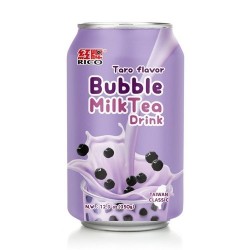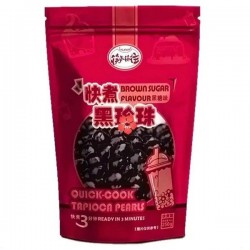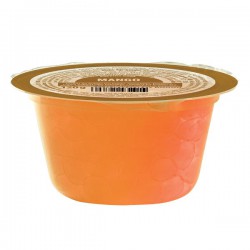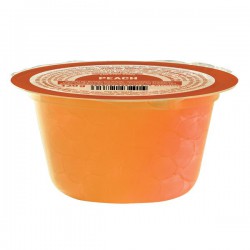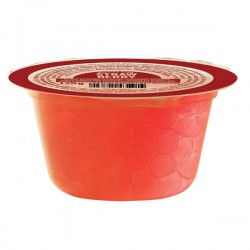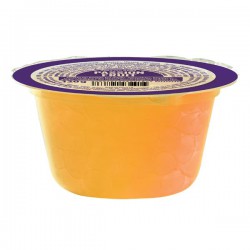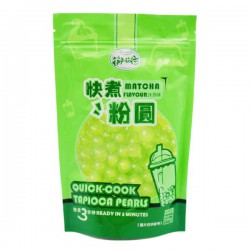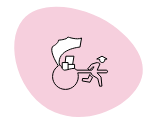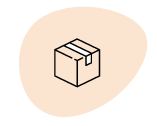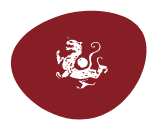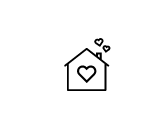Derfor har over 21.000 handlet her
Bubble Tea
Bubble tea – Taiwanese tea that's taking the world by storm
You may have come across the phenomenon before — it comes in large clear cups with wide straws. It’s available in many different colors, and the bottom of the cup is decorated with small, colorful balls that each taste different. Of course, we’re talking about bubble tea: a distinctive tea-based drink originating from Taiwan that, with its popping boba pearls, has become a huge success here in Denmark. The drink can be enjoyed hot or cold and is therefore a year-round treat. However, it’s especially refreshing when cold, making it perfect to enjoy in the summer heat or spring sunshine. In addition, the pretty colors and playful pearls make it an experience that goes beyond the ordinary cup of tea—or iced tea.
From Chinese tea traditions to modern bubble tea
It is a well-known fact that tea originates from Asia, more precisely China. Since 2737 years Note: the final phrase ("Siden 2737 år") is ambiguous/grammatically incomplete in Danish — did you mean "for 2,737 years" or "since the year 2737 (BCE/CE)?" f.Kr. Tea has been used as a drink, although at first it was primarily used to treat illness. It was mainly in southern China, however, that people enjoyed drinking tea and ascribed various properties to the beverage, such as that it helped one think more clearly.
Throughout the many dynasties in China, knowledge of tea spread, and from there the drink grew from being confined to Asian countries to reaching the rest of the world. In the 16th century Western priests and traders were introduced to it, and it was then known as "chá." → "tea." Note: "chá" is Portuguese for "tea" (the Danish word is "te"). Want me to translate anything else?. It quickly became popular in the Netherlands, where they introduced tea to Germany, France and what was then called New Amsterdam, now known as New York.
However, it was not only these countries that learned about and enjoyed tea during this period. In the 17th century the Russians also got hold of tea, which was given to Tsar Michael I by the Mongol Khan. After this introduction of tea to Russia it was agreed that there would be regular deliveries of tea from China by camel caravans, in exchange for which the Russians returned hides and pelts.
Tea also swept through Great Britain, where it to this day is a regular part of the British daily life — in the same way that coffee is for many Danes. Slowly tea has spread around the world, and while China is known for its green tea and the Brits for their tea with milk and sugar, there are many tea traditions worldwide. One of them is bubble tea.
Tea with milk or milk tea?
Perhaps you know the well-known British variety of tea, which is typically black tea with milk and sugar. It is sweet and creamy in flavor, where the sharp and bitter notes from the black tea leaves are rounded off by the milk. Tea with milk is one of the most popular varieties of bubble tea, where the tea is typically based on black, green, or oolong tea, which is then mixed with milk or condensed milk. However, bubble tea is also available in a version without milk, where it is simply a base of black, green, or oolong tea. You can then choose which topping or boba you want added. This opens up a wide range of flavor combinations, so you can find your own favorite.
The oldest known bubble tea drink consisted of a mixture of hot Taiwanese tea, tapioca pearls, condensed milk and syrup or honey. Nowadays bubble tea is usually served cold, so the tea is brewed in advance and then chilled — much like iced tea. The tapioca pearls, which are what make bubble tea so special, are originally made from the starch of cassava, which is a root or tuber. It can grow in conditions where many other plants fail to thrive, and it is full of starch. It is also these pearls that have determined the type of straw used to drink bubble tea. The straws are not the same size as ordinary straws, since the ordinary ones would not allow the pearls to pass through — and the pearls make up a large part of the experience. Especially the pearls known as popping boba, which are named that because they burst in the mouth. So the straw is extra wide, precisely so these pearls can be sucked up when you drink your bubble tea.
Origin of Bubble Teens
There is no doubt about where bubble tea comes from, but nonetheless two different origin stories circulate. One tells a story about The Hanlin Tea Room in Tainan, which invented bubble tea in 1986 when the owner, Tu Tsong-he, was inspired by the white tapioca pearls he saw at the local market Ah-bó-li."â" — This is just the letter "a" with a circumflex. It isn't a Danish word and has no translation by itself. If this is an encoding error for "å" or you meant a different word or phrase, please provide more context.u. He later that same day made tea using those pearls, and the drink became known as pearl tea.
The other story has it that bubble tea was invented in Taichung, at the Chun Shui Tang Tea Room. It is said that the owner, Liu Han-Chieh, began serving Chinese tea cold. She got the idea after visiting Japan in 1980. This new way of serving tea boosted the business, and several shops in the same chain were opened to serve cold tea over the counter. The company's product developer, Lin Hsiu Hui, then created bubble tea by pouring tapioca pearls into a cup of cold tea during a staff meeting. Tapioca pearls had previously been regarded as a traditional snack, so it was not unusual for them to be present with the tea at the meeting. She encouraged others to do the same, and the enthusiasm was so great that the new drink was quickly added to the menu. It ultimately became their best-selling product.
Toppings in many flavors and colors.
The popular drinks can be combined in a myriad of flavor ways, and especially the pearls you add can put their own special stamp on the taste. Boba, as the tapioca pearls are also called, are colored according to the ingredients mixed in. The classic tapioca pearls are black because they're made with brown sugar. You can also find pearls made of jelly, which come in all sorts of shapes such as stars, small squares, or rectangular pieces. They also come in a host of flavors, ranging from coconut, lychee, mango, coffee and many more. There are also popping boba, so named because the small spheres burst when you drink them. They often have juice or fruit syrup inside, and a few popular flavors are mango, strawberry, coconut, kiwi and honeydew melon.
Bubble tea and its popularity
Despite it being a little over 50 years since bubble tea began making ripples in Taiwan, the drink's popularity is ever-growing. In 2020, April 30 was officially designated National Bubble Tea Day, and that same year a picture of bubble tea was proposed as an alternative cover design for Taiwanese passports. Bubble tea is reportedly an important part of Taiwanese culture and serves as an important symbol.
What started in Taiwan in the 1980s quickly spread to East and Southeast Asia in the 1990s. In China it is believed that five times as much bubble tea is consumed as coffee. Here, it is increasingly Chinese brands that dominate the market, rather than the original Taiwanese ones. Bubble tea is also particularly popular among young Chinese people, where buying a bubble tea has become a new way to show appreciation.
Things were different in Japan, where bubble tea first appeared on the market in the late ’90s but without much impact. It took another good ten years before the country was ready to embrace the trend. Since then, however, bubble tea has been one of the hottest social trends, and it is again particularly among teenagers that the drink has gained traction. Enthusiasm for tapioca has reached such heights in Japan that in 2019 an amusement park with a tapioca theme was built in Harajuku.
In the United States, bubble tea was introduced by Taiwanese immigrants who opened the first bubble tea shop, Fantasia Coffee & Tea, in Cupertino, California. Since then a number of chains have popped up selling the now-famous drink. As the tea with its familiar pearls took hold in the U.S., it went from being just a beverage to becoming a cultural identity for many Asian Americans. The phenomenon became known as "boba life."
Make your own bubble tea
Dreaming of making your very own bubble tea at home? Then you've come to the right place. At Den Kinesiske Købmand We have everything you need to make your very own tea — from straws to tapioca. We carry ready-made popping boba in many flavors, syrup, milk tea powder, instant tapioca pearls, and even canned tea.
To make your own tea, you will need three things:
The text contains only a dash ("-"). There is nothing to translate; it remains "-" in English. Tea
-Milk
-"Topping" — "topping" (same word in English). Possible synonyms depending on context: "topping", "garnish", "icing" / "frosting" (for cakes).
You'll also need a glass and a straw, or a spoon, to eat the pearls.
Tea can be bought in cans or in powder form, or as a syrup that needs to be mixed with water. It depends on which flavor and which variant you want. The powdered tea contains milk powder and therefore makes a milk tea.
For toppings you can get both pearls that are ready to use and instant tapioca that must be boiled first. If you choose tapioca pearls instead of popping boba, remember that the pearls benefit from soaking in a sugar syrup for at least half an hour before use.
Finally, all that's left is to pour the tea and topping into a glass, stir it with a spoon, and then it's ready to serve.
Bubble tea can be served in many types of glasses and cups. The traditional version comes in a transparent plastic cup, but at home you can easily use other options. So if you dream of inviting people to a tea party with bubble tea, you can simply bring out your nice tea set for the guests. Most important are the straws, as these are essential for being able to enjoy the tea with boba or tapioca pearls while you drink.
What are the advantages of making your own bubble tea? It may sound like a hassle, but it's far from that. With a few simple steps you'll quickly and easily get started making a bubble tea that's at least as good as the ready-made ones you can buy — and for a fraction of the price. It also gives you the opportunity to sit back and relax at home, perhaps on a terrace or balcony, and enjoy your freshly made bubble tea. Another advantage is that you can tailor the flavor of your tea yourself. You decide how sweet, strong or tart it should be. Want extra boba, or was one just not enough? Then you have everything you need to top up with another glass.
Frequently asked questions about Bubble Tea
What is bubble tea?
Bubble tea is a tea-based drink to which small tapioca pearls are added. Over time the drink has evolved, and today you can get bubble tea in many different flavors and with many types of pearls. It is most often enjoyed cold, either as plain tea or as milk tea. The bubbles, or pearls, can be either popping fruit pearls or chewy tapioca pearls.
How do you make bubble tea?
The bubble tea base is made either from powder or from strong, cold tea that is mixed to the flavor you want. Several Asian supermarkets sell bubble tea powder that simply needs to be mixed with water. You can also buy the pearls pre-made, either requiring a short preparation or bought ready to use, which you then add to the glass. An important element is the special straw, which is larger than normal straws — that way you can suck up the pearls.
What is bubble tea made of?
Tea is usually black, green, or oolong, which you can cold-brew or buy in powder form. If you prefer the milk version, you can freely choose between fresh milk, plant-based milk, condensed milk, or coconut milk. The drink is usually sweetened with honey or syrup, and pearls or bubbles are then added.
How do you make homemade bubble tea?
It's not difficult to make bubble tea yourself. You can buy all the ingredients to make your own tea here, and we have powdered tea, ready-to-use boba, tapioca pearls you can prepare yourself, various syrups for your tea, as well as the perfect straws. All you have to do is choose which combination is your favorite!
Where does bubble tea come from?
Bubble tea comes from Taiwan, where it originated in the 1980s. At first it was served hot, but nowadays the drink is served cold. To begin with, the drink was based on black Taiwanese tea mixed with tapioca pearls, condensed milk and syrup. Although this is the traditional milk tea used to make bubble tea, today you can get a wide array of different flavors.
How do you make bubble tea bubbles?
There are two types of bubbles added to bubble tea: tapioca pearls and jelly balls. The tapioca pearls are made from tapioca flour, which is a starch that becomes soft and chewy when prepared correctly. Many tapioca pearls are black because brown sugar has been used to flavor them. The jelly pearls are often fruit-based and are also called popping boba, because they burst in your mouth when you eat them.
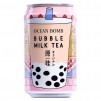
 EN
EN
 DA
DA
 ZH
ZH












